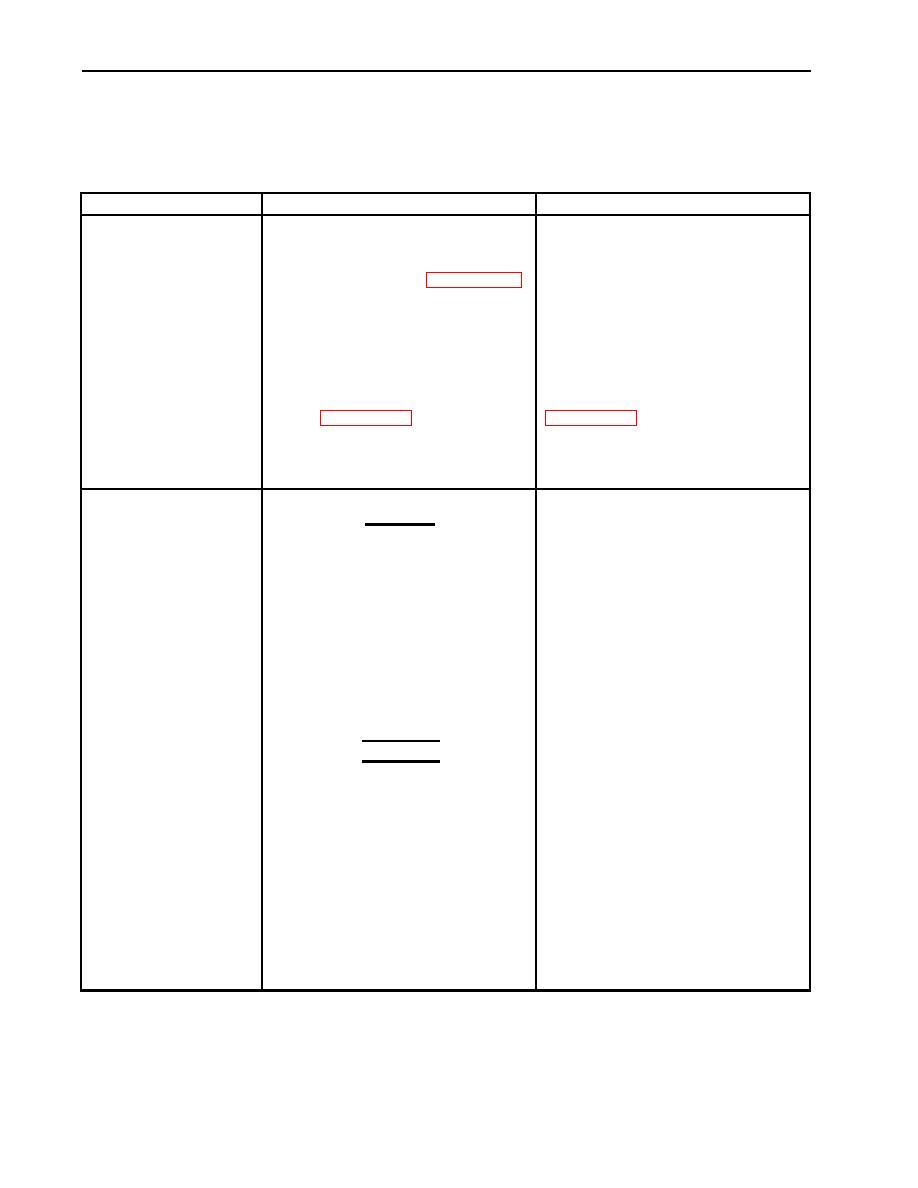 |
|||
|
|
|||
|
Page Title:
Table 1. Engine Troubleshooting Procedures - continued |
|
||
| ||||||||||
|
|
 TM 9-2320-361-24-1
0008 00
MECHANICAL SYSTEMS TROUBLESHOOTING - DIRECT SUPPORT (Contd)
Table 1. Engine Troubleshooting Procedures (Contd).
MALFUNCTION
TEST OR INSPECTION
CORRECTIVE ACTION
4. Check valve seats, valve
If oil consumption remains more
11. EXHAUST COLOR
guides, or cylinder head
than one quart for every 60 mi
BLUE DURING
gaskets for defects. Remove
(96 km), piston rings or cylinders
NORMAL
cylinder heads (WP 0027 00)
bores may be worn or defective.
OPERATION (Contd)
and disassemble
Replace defective components.
(WP 0438 00).
5. Repeat steps 1 and 2 of
Perform compression test. If the wet
enigine oil consumption test.
compression test raises compression
If valve seats, valve guides or
readings more than 50 psi (345 kPa),
cylinder heads are defective,
a piston ring or cylinder bore
replace (WP 0443 00 or
problem is indicated. Replace engine
12. EXHAUST COLOR
CAUTION
WHITE DURING
Thick white smoke indicates coolant
NORMAL
is present in engine combustion
OPERATION AND
chambers during operation. When
IDLE
this condition is evident, shut engine
down immediately and determine
cause. Continued engine operation
may result in permanent engine
damage.
1. Check engine temperature. Ensure
engine temperature is within
operating temperature
(TM 9-2320-361-10).
WARNING
Hot coolant is under pressure. Care
should be used when removing
coolant filler cap or inspecting hot
engine coolant leaks. Steam or hot
coolant under pressure may cause
severe injury to personnel.
1. If pressure test reading declines
2. Pressure test warm engine cooling
and there is no indication of
system (TM 750-254). Observe
external leaks, coolant is leaking
pressure tester reading.
internally into engine or
combustion chambers. Remove oil
dipstick and check engine oil for
presence of coolant.
|
|
Privacy Statement - Press Release - Copyright Information. - Contact Us |